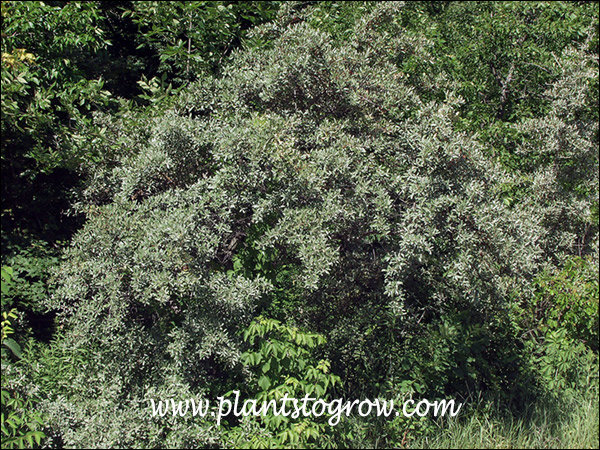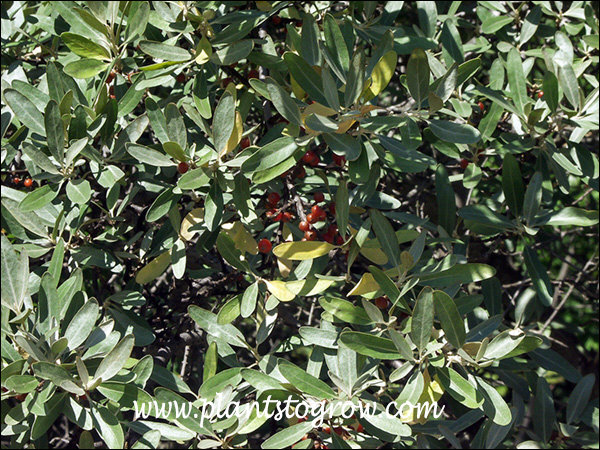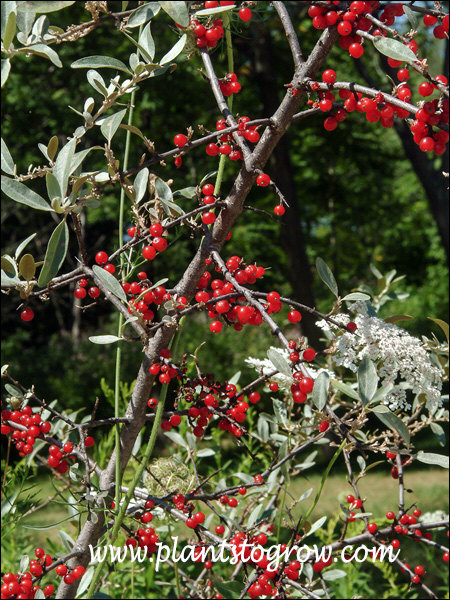| Description | Autumn Olive (Elaeagnaceae Elaeagnus umbellata) is a small ornamental tree with silvery foliage and bright red fruit that was widely planted but has now been listed as a noxious weed. |
|---|---|
| Pronunciation | (el-ee-Ag-nus)(um-bel-AL-ta) |
| Plant Type | Trees Deciduous, Site author's observations |
| Hardiness Zone | 5 |
| Sunlight | full to shade, very adaptable |
| Moisture | average, very adaptable |
| Soil & Site | average, very adaptable |
| Flowers | bell shaped, yellow-white, fragrant |
| Fruit | berry-like achene, red |
| Leaves | alternate, simple, 1 to 3 inches long, lanceolate, entire margin, green, silvery and scaly below. |
| Stems | silver brown with scales, can have spiny sub branches |
| Roots | have nodules to fix nitrogen in the soil |
| Dimensions | 15-18 feet tall by equal spread |
| Propagation | seeds, spread by birds into native areas |
| Native Site | East Asia, China, Korea, Japan |
| Cultivar Origin | Introduced into the United States in 1830. Planted as an ornamental, for wildlife habitat, as windbreaks and to restore deforested and degraded lands. Has non become a weedy pest. |
| Misc Facts | Elaeagnus means olive tree in Greek, and ubellata is Latin for "bearing umbles" about the flower's inflorescence. |
| Notes & Reference | #01-Manual of Woody Landscape Plants (Michael Dirr), #274-Site Authors' observations and growing experiences |

Cart




